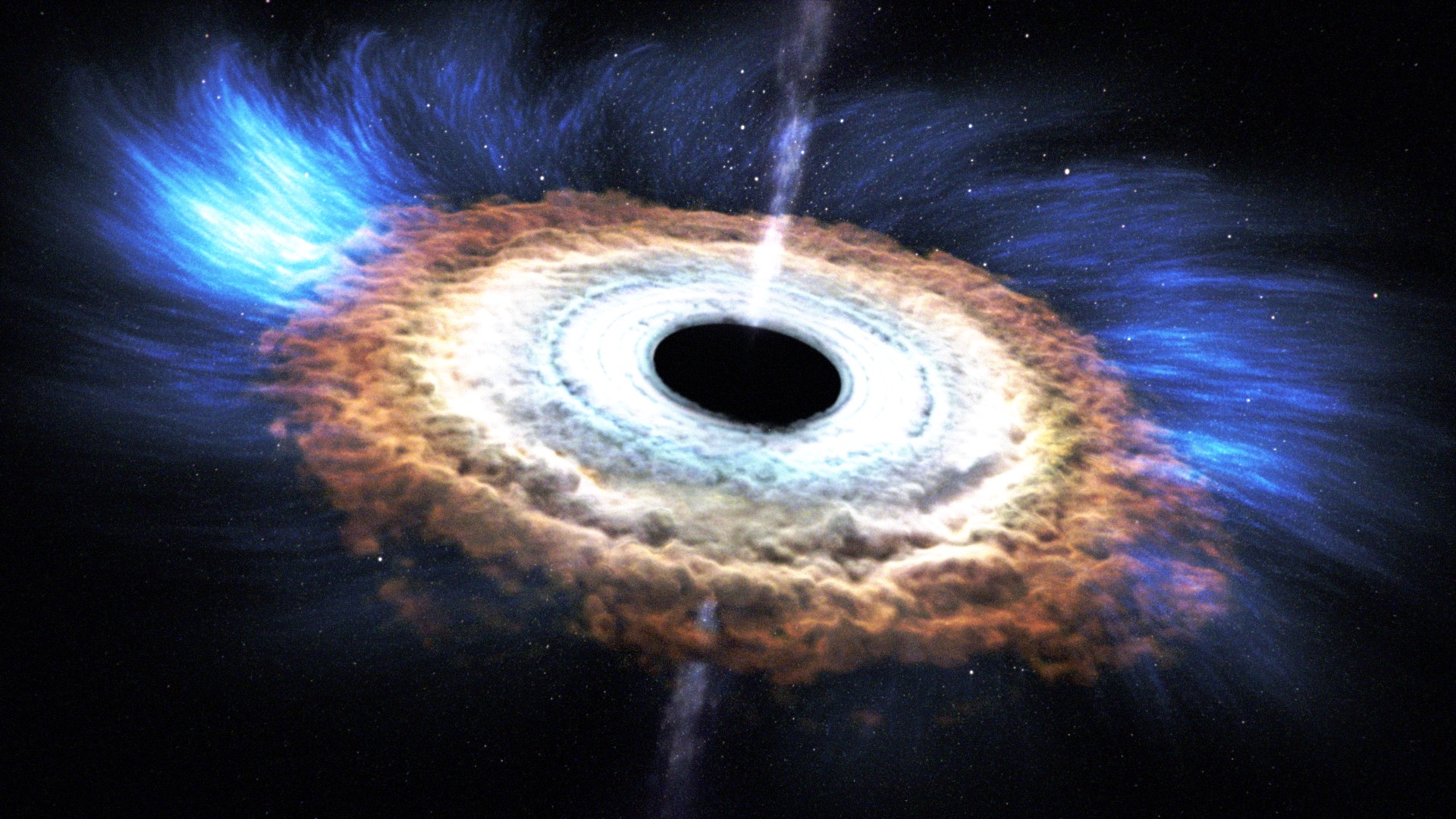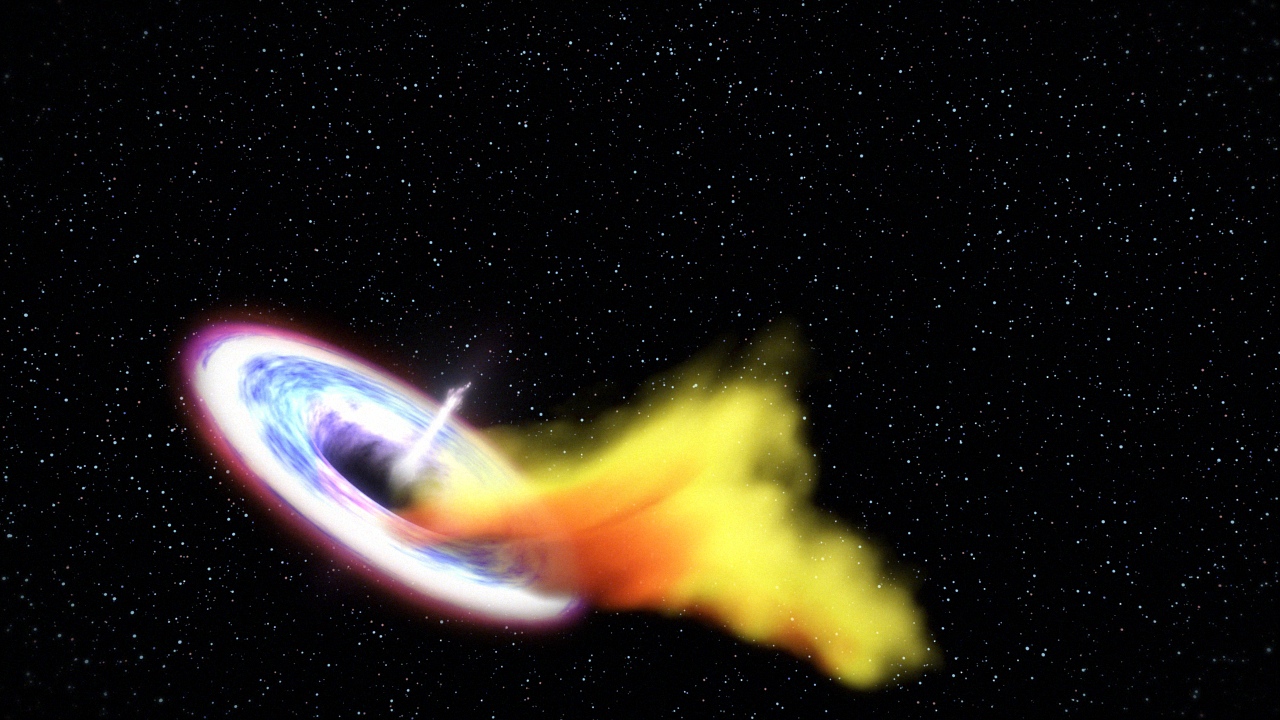Massive Black Hole Shreds Passing Star (Animation Only)
A star approaching too close to a massive black hole is torn apart by tidal forces, as shown in this artist's rendering. Filaments containing much of the star's mass fall toward the black hole. Eventually these gaseous filaments merge into a smooth, hot disc glowing brightly in X-rays. As the disk forms, it's central region heats up tremendously, which drives a flow of material, called a wind, away from the disk.
Credit: NASA's Goddard Space Flight Center/CI Lab
Watch this video on the NASA Goddard YouTube channel.
For complete transcript, click here.
Credits
Please give credit for this item to:
NASA's Goddard Space Flight Center. However, individual items should be credited as indicated above.
-
Animator
- Brian Monroe (USRA)
-
Producer
- Scott Wiessinger (USRA)
-
Writer
- Francis Reddy (Syneren Technologies)
-
Scientist
- Jon Miller (University of Michigan)
Missions
This page is related to the following missions:Series
This page can be found in the following series:Release date
This page was originally published on Wednesday, April 6, 2016.
This page was last updated on Wednesday, May 3, 2023 at 1:48 PM EDT.


![Music credit: "High Heelz" by Donn Wilkerson [BMI] and Lance Sumner [BMI]; Killer Tracks BMI; Killer Tracks Production MusicWatch this video on the NASA Goddard YouTube channel.](/vis/a010000/a012600/a012621/Hubble_black_hole_birth_thumbnail.png)
![Music credit: "Stealth Car" by Tom Sue [GEMA] and Zac Singer [GEMA]; Ed. Berlin Production Music/Universal Publishing Production Music GmbH GEMA; Berlin Production Music; Killer Tracks Production MusicWatch this video on the NASA Goddard YouTube channel.](/vis/a010000/a012500/a012539/hubble_rogue_black_hole_thumbnail2.png)